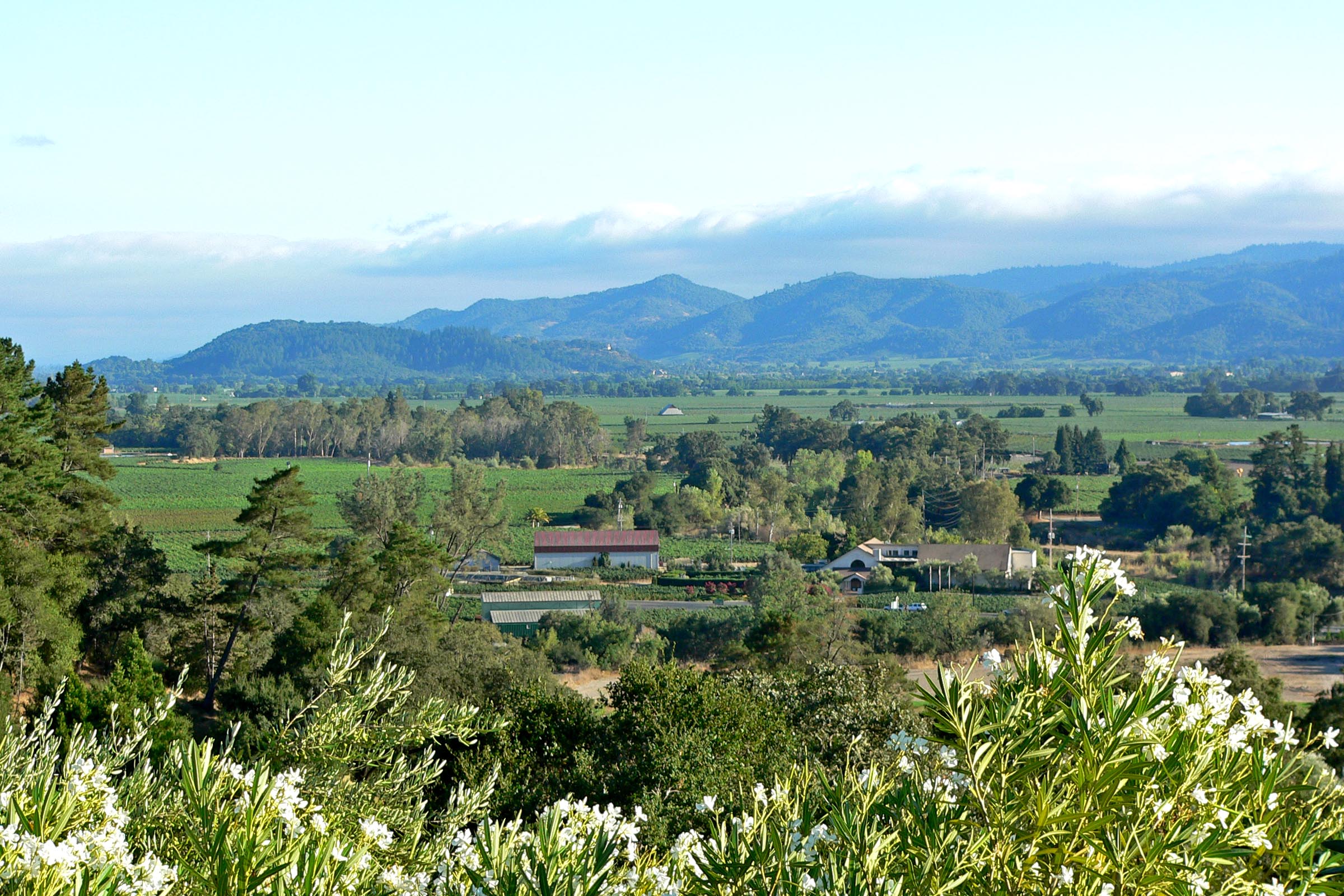In the region area that splits Sonoma Valley to the west from Napa Valley to the east, minerals from a wide range of periods are found. The mountains are mostly volcanic rocks from the tertiary period with older Quaternary alluvium found in the lower elevations such as the valley floors and younger Cretaceous period minerals on the western edge of Napa Valley. Radiometric dating from various places would likely confirm the geological map.
 |
| Sonoma Mountains viewed from across Napa valley (Shebs, 2005) |
In areas where the Sonoma mountains meet valley floors on either side, the Geological map shows several distinct groups of Quaternary alluvium that are dated younger than the Quaternary alluvium of the valley floors. Using information on the location of mountain creeks, one could determine if these are alluvial fans which formed which carried sediment to the floor from higher elevations.
In the furthest south portion of this area (just north of the bay), a blob of Quaternary volcanic rock is seen. Comparing the blob to a topological map indicates that this is a high point named Sears Point. Since the rocks that surround it are of a younger volcanic origin and considering the principle of superposition, we could determine that there is more Quaternary rock from this formation covered by the later volcanic rocks.
Photo reference:
Shebs, S. (2005, September). File:Napa Valley from Auberge du Soleil 1.jpg in Wikimedia Commons. https://commons.wikimedia.org/wiki/File:Napa_Valley_from_Auberge_du_Soleil_1.jpg
No comments:
Post a Comment